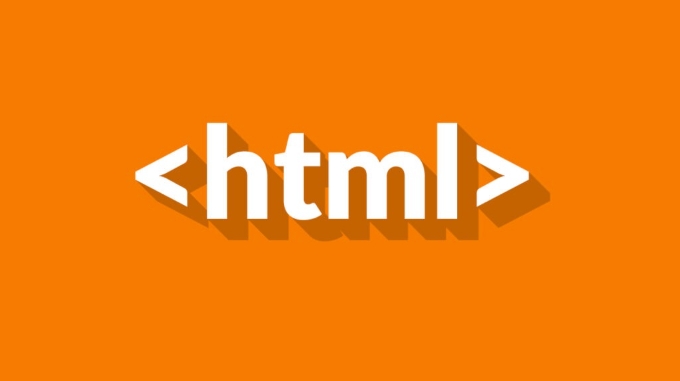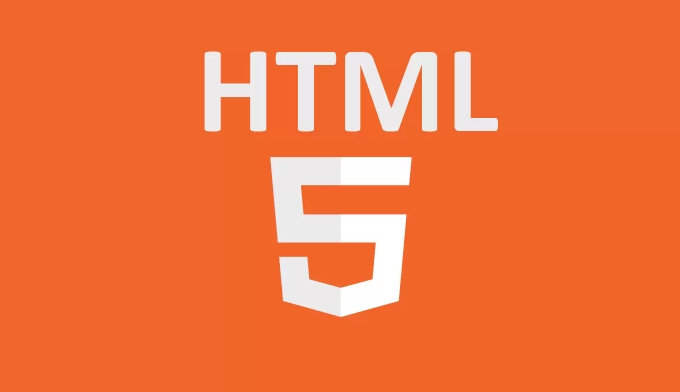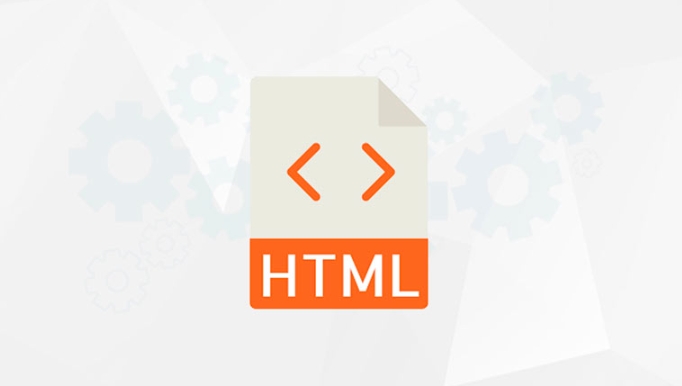What is the purpose of the rel attribute in a link tag in HTML?
Aug 03, 2025 pm 04:50 PMrel="stylesheet" links CSS files for styling the page; 2. rel="preload" hints to preload critical resources for performance; 3. rel="icon" sets the website’s favicon; 4. rel="alternate" provides alternate versions like RSS or print; 5. rel="preconnect" and rel="dns-prefetch" optimize loading by establishing early connections; the rel attribute defines the link’s purpose so browsers handle resources correctly.

The rel attribute in an HTML <link> tag specifies the relationship between the current document and the linked resource. It helps browsers, search engines, and other tools understand how the linked file should be treated or used in relation to the page.

Here are the most common uses:
1. Loading Stylesheets
When linking a CSS file, you use:

<link rel="stylesheet" href="styles.css">
Here, rel="stylesheet" tells the browser that the linked file is a stylesheet and should be applied to format the page.
2. Preloading Resources
You can hint to the browser that a resource will be needed soon:

<link rel="preload" href="font.woff2" as="font" type="font/woff2" crossorigin>
rel="preload" tells the browser to fetch the resource early, improving performance.
3. Favicons
To specify a favicon:
<link rel="icon" href="favicon.ico" type="image/x-icon">
rel="icon" indicates the linked image is used as the website’s icon in tabs or bookmarks.
4. Alternate Formats
For alternate versions of the page (like RSS feeds or print versions):
<link rel="alternate" type="application/rss xml" href="feed.rss"> <link rel="alternate" media="print" href="print.html">
5. Security and Trust
Used with security policies or identity:
<link rel="preconnect" href="https://fonts.googleapis.com"> <link rel="dns-prefetch" href="https://cdn.example.com">
These help optimize loading by establishing early connections.
In short, the rel attribute defines what kind of link it is, so the browser knows how to handle the resource. Without it (or with an incorrect value), the link might be ignored or misused.
Basically, it’s a way to give context to a link — not just where to go, but why it’s there.
The above is the detailed content of What is the purpose of the rel attribute in a link tag in HTML?. For more information, please follow other related articles on the PHP Chinese website!

Hot AI Tools

Undress AI Tool
Undress images for free

Undresser.AI Undress
AI-powered app for creating realistic nude photos

AI Clothes Remover
Online AI tool for removing clothes from photos.

Clothoff.io
AI clothes remover

Video Face Swap
Swap faces in any video effortlessly with our completely free AI face swap tool!

Hot Article

Hot Tools

Notepad++7.3.1
Easy-to-use and free code editor

SublimeText3 Chinese version
Chinese version, very easy to use

Zend Studio 13.0.1
Powerful PHP integrated development environment

Dreamweaver CS6
Visual web development tools

SublimeText3 Mac version
God-level code editing software (SublimeText3)

Hot Topics
 Implementing Native Lazy Loading for Images in HTML
Jul 12, 2025 am 12:48 AM
Implementing Native Lazy Loading for Images in HTML
Jul 12, 2025 am 12:48 AM
Native lazy loading is a built-in browser function that enables lazy loading of pictures by adding loading="lazy" attribute to the tag. 1. It does not require JavaScript or third-party libraries, and is used directly in HTML; 2. It is suitable for pictures that are not displayed on the first screen below the page, picture gallery scrolling add-ons and large picture resources; 3. It is not suitable for pictures with first screen or display:none; 4. When using it, a suitable placeholder should be set to avoid layout jitter; 5. It should optimize responsive image loading in combination with srcset and sizes attributes; 6. Compatibility issues need to be considered. Some old browsers do not support it. They can be used through feature detection and combined with JavaScript solutions.
 Implementing Responsive Images with the HTML srcset and sizes Attributes
Jul 12, 2025 am 12:15 AM
Implementing Responsive Images with the HTML srcset and sizes Attributes
Jul 12, 2025 am 12:15 AM
srcset and sizes are key properties for HTML implementation of responsive images. srcset provides multiple image sources and their width or pixel density, such as 400w and 800w, and the browser selects the appropriate image accordingly; sizes defines the display width of the image under different screen widths, such as (max-width: 600px)100vw, 50vw, so that the browser can more accurately match the image size. In actual use, you need to prepare multi-size pictures, clearly named, design layout in accordance with media query, and test the performance of the equipment to avoid ignoring sizes or unit errors, thereby saving bandwidth and improving performance.
 Creating Hyperlinks for Navigation with the HTML a Tag
Jul 11, 2025 am 03:03 AM
Creating Hyperlinks for Navigation with the HTML a Tag
Jul 11, 2025 am 03:03 AM
Using HTML tags, you can use the href attribute to realize page jump, open new windows, positioning within pages and email and phone link functions. 1. Basic usage: Specify the target address through href, such as accessing a web page; 2. Open a new window: add target="_blank" and rel="noopener" attributes; 3. Jump within the page: combine id and # symbol to achieve anchor point positioning; 4. Email phone link: use mailto: or tel: protocol to trigger system applications.
 What are the differences and use cases for html textarea and input type text?
Jul 12, 2025 am 02:48 AM
What are the differences and use cases for html textarea and input type text?
Jul 12, 2025 am 02:48 AM
The main difference is that textarea supports multiple lines of text input, while inputtext is only available in a single line. 1. Use inputtype="text" to be suitable for short and single-line user input, such as username, email address, etc., and can set maxlength to limit the number of characters. The browser provides automatic filling function, making it easier to uniformly style across browsers; 2. Use textarea for scenarios that require multiple lines of input, such as comment boxes, feedback forms, support line breaks and paragraphs, and can control the size through CSS or disable the adjustment function. Both support form features such as placeholders and required fills, but textarea defines the size through rows and cols, and input uses the size attribute.
 The `` vs. `` in HTML
Jul 19, 2025 am 12:41 AM
The `` vs. `` in HTML
Jul 19, 2025 am 12:41 AM
It is a block-level element, used to divide large block content areas; it is an inline element, suitable for wrapping small segments of text or content fragments. The specific differences are as follows: 1. Exclusively occupy a row, width and height, inner and outer margins can be set, which are often used in layout structures such as headers, sidebars, etc.; 2. Do not wrap lines, only occupy the content width, and are used for local style control such as discoloration, bolding, etc.; 3. In terms of usage scenarios, it is suitable for the layout and structure organization of the overall area, and is used for small-scale style adjustments that do not affect the overall layout; 4. When nesting, it can contain any elements, and block-level elements should not be nested inside.
 Structuring Content with HTML Headings and Paragraphs
Jul 12, 2025 am 02:44 AM
Structuring Content with HTML Headings and Paragraphs
Jul 12, 2025 am 02:44 AM
When writing web content, you need to pay attention to the title and paragraph structure to improve the reading experience and SEO effect. 1. The title level should be clear. A page should only use one h1 as the main title, h2 as the title of the big section, and h3 subdivides the subsections to avoid multiple h1, skip grades or keyword piles up; 2. The paragraph should be controlled in three to four lines, and the key points should be directly mentioned at the beginning, and if necessary, use the ul list to enhance readability; 3. Appropriately use the subtitles of h2 and h3 to guide readers' attention, facilitate information search and optimize search engine recognition.
 Specifying Character Encoding for HTML Documents (UTF-8)
Jul 15, 2025 am 01:43 AM
Specifying Character Encoding for HTML Documents (UTF-8)
Jul 15, 2025 am 01:43 AM
To correctly set the character encoding of the HTML document to UTF-8, you need to follow three steps: 1. Add at the top of the HTML5 part; 2. Configure the response header Content-Type: text/html; charset=UTF-8, if Apache uses AddDefaultCharsetUTF-8, Nginx uses charsetutf-8; 3. Select the UTF-8 encoding format when saving HTML files in the editor. These three links are indispensable, otherwise it may lead to garbled page code and failure of special character parsing, affecting user experience and SEO effect. It is important to ensure that HTML declaration, server configuration and file saving are consistent.
 Essential HTML Tags for Beginners
Jul 27, 2025 am 03:45 AM
Essential HTML Tags for Beginners
Jul 27, 2025 am 03:45 AM
To get started with HTML quickly, you only need to master a few basic tags to build a web skeleton. 1. The page structure is essential, and, which is the root element, contains meta information, and is the content display area. 2. Use the title. The higher the level, the smaller the number. Use tags to segment the text to avoid skipping the level. 3. The link uses tags and matches the href attributes, and the image uses tags and contains src and alt attributes. 4. The list is divided into unordered lists and ordered lists. Each entry is represented and must be nested in the list. 5. Beginners don’t have to force memorize all tags. It is more efficient to write and check them while you are writing. Master the structure, text, links, pictures and lists to create basic web pages.






